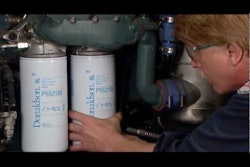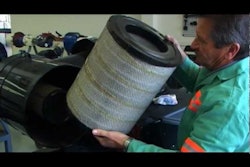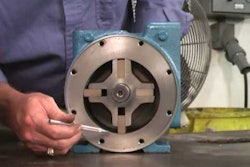The advancements in clean diesel technology over the past decade in conjunction with new research and development in all modes of diesel engines will play a major role in helping meet the updated Clean Air Act particulate matter (soot) standards announced by the U.S. Environmental Protection Agency.
“For the last decade, diesel technology has undergone a fundamental transformation to near zero emissions, based on ultra low sulfur diesel fuel, advanced clean-burning engines and new emissions control technology,” says Allen Schaeffer, the Executive Director of the Diesel Technology Forum (DTF). “These advancements have occurred across the board - from the smallest industrial engine to the increasingly-popular clean diesel cars, commercial trucks, off-road machines and equipment, marine vessels and locomotives.
“The results of these efforts are clear since today, according to EPA, diesel engines account for only a small portion of the national PM emissions inventory – less than 6%.”
Modern Diesel Trucks and Buses Have Near Zero Levels of Particulate Emissions
“These last 10 years truly are the decade of clean diesel and the results are visible today,” Schaeffer says. “New highway diesel truck engines have near zero emissions of particulate matter and oxides of nitrogen (NOx) – a remarkable 98% less than 1988 models. It is also noteworthy that truck and engine manufacturers are not only producing near-zero level emissions, but these vehicles are also consuming on average of 5% less fuel.
“Just how significant is this accomplishment? Consider that it now takes 60 of today’s clean diesel heavy-duty trucks to equal the particulate emissions of one 1988 truck – a 60 to 1 ratio.
Similar Emissions Reductions Underway For Wide Range of Off-Road Engines
“Similar reductions in emissions of particulates and oxides of nitrogen are well underway and will be completed by 2014 for the wide range of off-road engines found in everything from small construction equipment and farm machinery to freight locomotives, marine vessels, work boats and very large off-road machines and mining equipment.
“The new generation of clean diesel technology is not only meeting its emissions reduction targets but is also exceeding them,” Schaeffer says. “Further contributions will come as more new technology engines and equipment are put into service in the years ahead.
“Just as the EPA’s March 2012 Black Carbon Report to Congress stated that new diesel technology will play a major role in helping reduce black carbon emissions by 2030, new diesel technology will play a major role in helping meet the new Clean Air Act standards for soot.”
Success in Diesel PM Reductions in California Highlight Technological Advancements
Schaeffer says the success in reducing diesel PM 2.5 in California highlights how new diesel technology is dramatically improving air quality. The California Air Resources Board (ARB) identified the top-10 contributors to PM 2.5 and diesel engines and equipment rank as the 8th and 9th highest contributors, Schaeffer says.
California’s Top 10 PM Contributors
1) Wildfires 215.011 t/d
2) Residential fuel combustion 109.322
3) Managed burning & disposal 100.166
4) Paved road dust 59.343
5) Unpaved road dust 47.818
6) Fugitive windblown dust 45.165
7) Farming operations 39.585
8) Heavy-heavy duty diesel trucks 29.910
9) Off-road equipment 27.121
10) Mineral processes 24.841
Schaeffer says according to the ARB, diesel particulate emissions from on-road heavy-duty trucks have declined from 7.5% in 1990 to 3.8% in 2008, with future projections in 2020 for the category to account for only 1.6% of all emissions.
Older Diesel Engines Can Be Modernized With New Technology
“Beyond the new technology advancements in reducing particulate emission, there are opportunities for modernizing and upgrading existing diesel engines and equipment,” Schaeffer says. “We are continuing to work with national environmental and health organizations to increase funding for the highly-successful voluntary and incentive-based Diesel Emissions Reduction Act, which is helping to modernize and upgrade older diesel engines in school and transit buses, commercial trucks, construction and agricultural equipment, and marine vessels.”



















